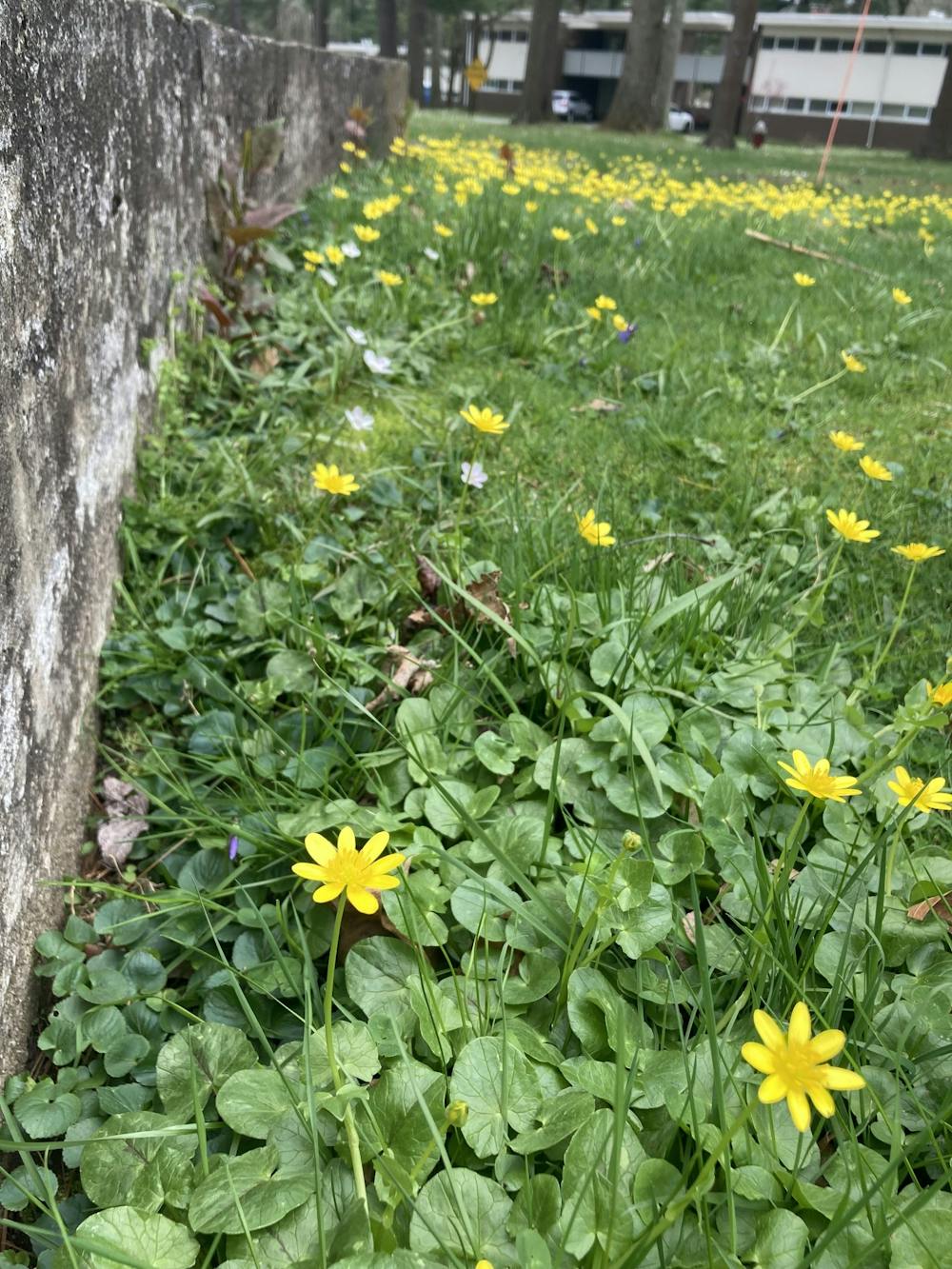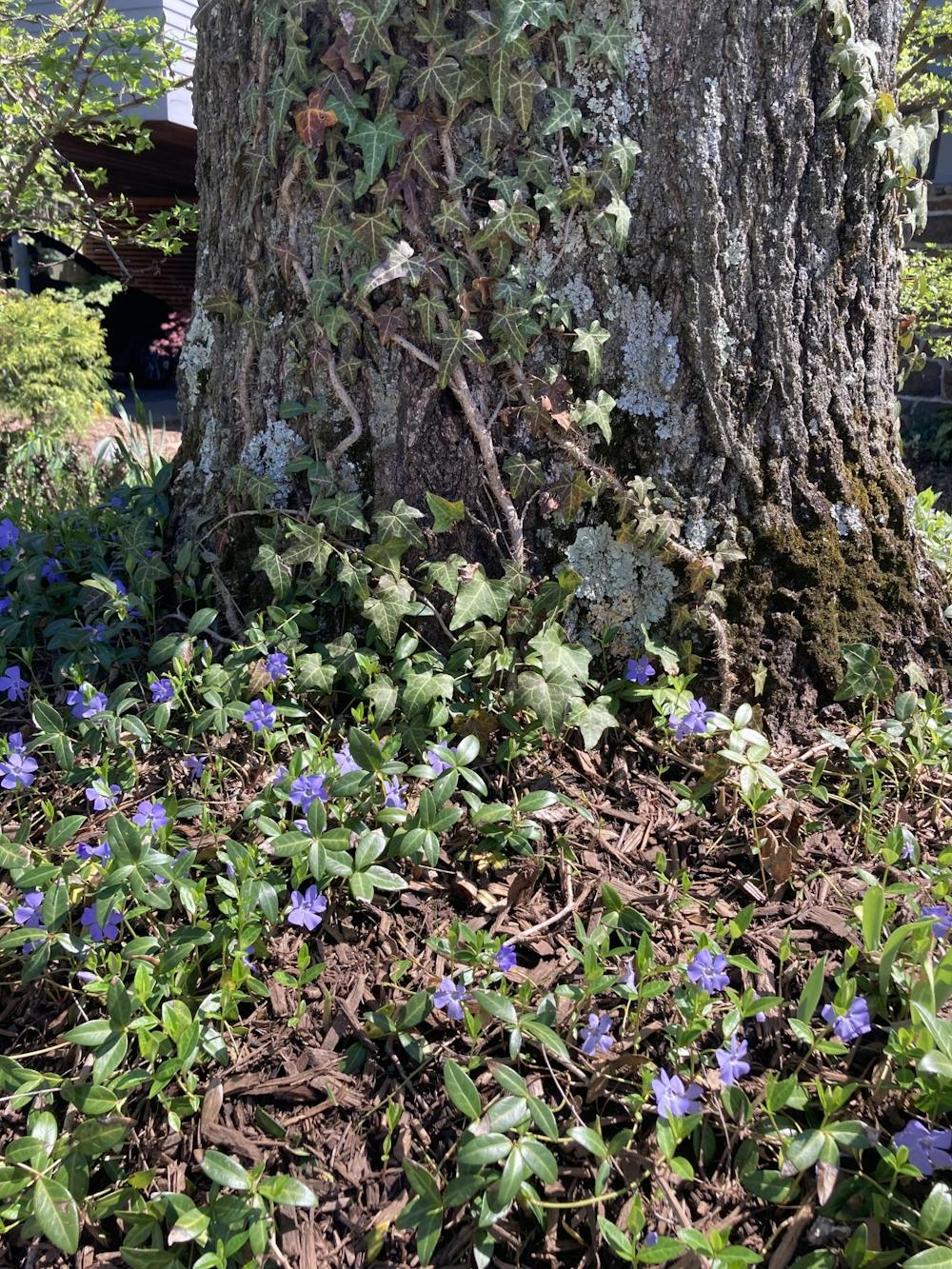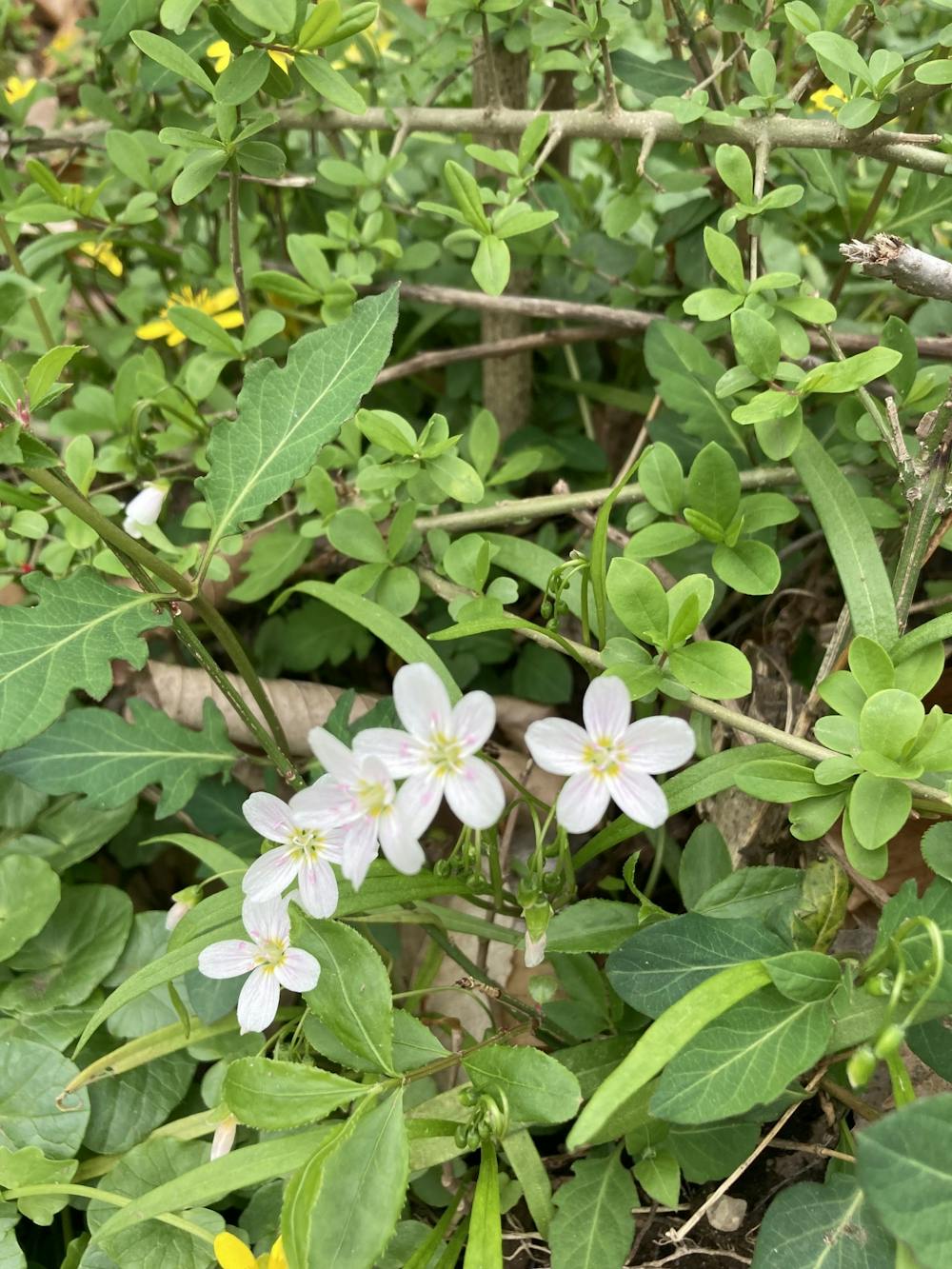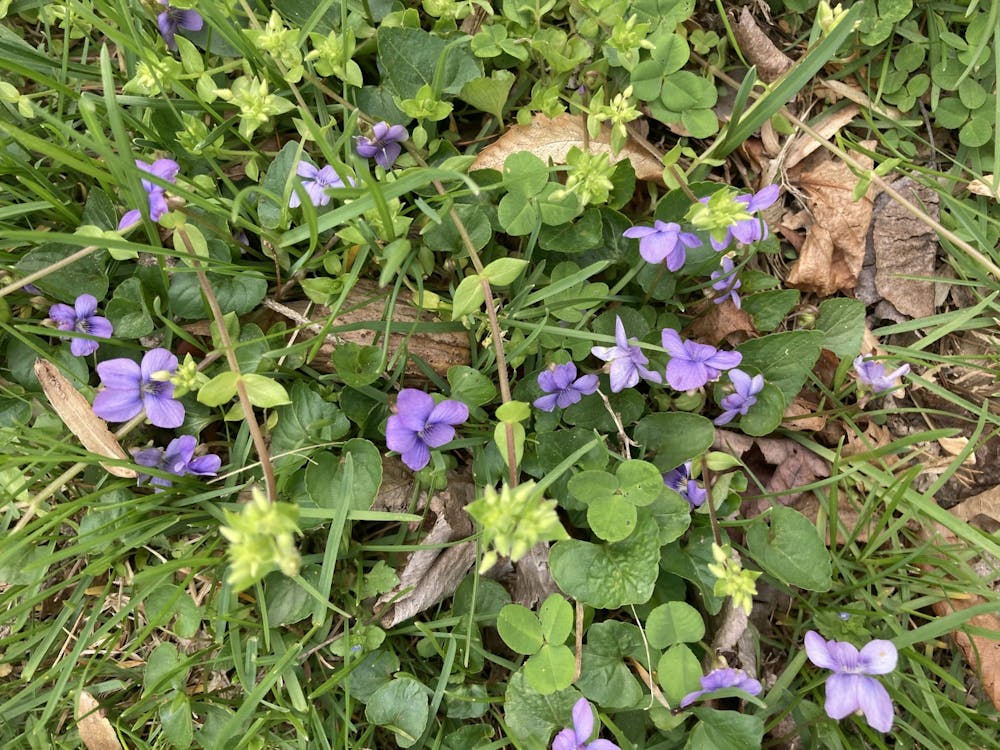The earth has finally defrosted, and little signs of it are all over campus. The carefully planted tulips and flowering trees around campus add pops of color to a scenery whose palette, between stone buildings and snow, emphasizes white and gray for so many months of the year. But though these intentional bits of nature and springtime make me smile, my favorite part of campus’ emergence into warmer weather is the flowers that start popping up on their own, unexpectedly appearing on patches of grass that lay plain the day before.
They’ve been most noticeable to me while jogging just outside campus. Running is a point of consistency in my life, and I find it comforting to let it pull me into a routine wherever I am. I run the same short loop here every day, weather permitting. My body doesn’t really need my brain anymore on these runs, and all responsibility can be transferred to my legs, so familiar with the stretches of pavement and dirt that they carry me without my having to think.
The route itself doesn’t change — except, of course, with the seasons. Just like it’s harder to notice a child’s growth when you see them everyday, it was difficult for me to appreciate the path’s slow crawl out of winter, the trees blossoming little by little every day as I ran under them. At some point though, I stopped slipping on snow and started seeing tiny flowers pop up by the sidewalk.
I’ve started lingering more, pausing to watch a bird poking at the ground or a butterfly fluttering past. Because of these moments of stillness, I’ve started paying more attention to the flowers that make my run so colorful.
Lacing up my shoes and hitting the pavement, I pass by blossoming trees on my way out of campus. Turning onto a dirt path, I’m greeted first by patches of violets. There are over 400 species of violets, and I don’t have the expertise to classify these beyond the genus, viola, but I think the single name denoting their color is the most important part of their identity anyway. It’s a shade that enchants me to the point that, even if I lean in close, I barely register their texture or smell.
Directly opposite on the color wheel lies the deep yellow of buttercups, the next flower I encounter on my run. As I make my way up a slight hill, I see stretches of this hue blanketed in green leaves, a layer of vibrancy that’s sprung up between the brown dirt and tree trunks. Their petals always strike me for their glossiness. When I was younger, I used to press them to my nose to see if any yellow-ness would rub off. The results would tell me if I should expect to fall in love soon. I’m not sure why I believed this, or who told me — perhaps the plants themselves. But there’s not much use to doing it now since I can’t remember if a yellow stain on my nose meant I should or shouldn’t, and I think I’m too old for the flowers to talk to. As a child, I knew more of nature’s secrets.

Paige Cromley / The Daily Princetonian
While that intuitive sense of nature has dwindled with age, it seems that at least my botanical vocabulary is improving with time. I just learned the name of a particular flower that keeps catching my eyes for the deep purple stripes along its lilac petals: the Persian speedwell. I spot the Persian speedwells about halfway through my run; just a few steps later, I pass by a group of Virginia springbeauties. Or, at least, I think that’s what they are: five white open petals, hints of yellow towards the center, but lacking the pink veins I’ve seen before.


Paige Cromley / The Daily Princetonian
As I turn down the street that eventually returns me to my dorm, I see periwinkles gathered around the base of a tree trunk hugged by ivy. These plants are also called creeping myrtles, but personally, I like the simplicity of referring to a flower by its shade, just like the violets a few miles back. Actually, we’re technically referring to a shade by the flower; the names for both colors originated from the blossoms.

Paige Cromley / The Daily Princetonian
Nearby, I spot another handful of Virginia springbeauties, different from the last ones. These have petals shyly closing in on themselves, and they’re painted with characteristic light pink stripes. If I had a paintbrush with me instead of sneakers, I might sit here and try to capture their bashful elegance.


Paige Cromley / The Daily Princetonian
It adds a little bit of extra joy to my day that my runs, performed now in t-shirts instead of hoodies and resulting in much more sweat, have become more colorful as spring makes itself known. I can’t help but be conscious of the transience of this beauty. Dandelions burst into white fluffy wishes waiting to be blown; I’ve already seen a few in this later stage of life, delicately holding themselves together before the wind or a child’s breath carries their seeds away. Flowers reach their full bloom and then the beginnings of summer start drying out their freshness. So I pay a little more attention now, to remember in later seasons.
Paige Cromley is a staff writer who likes writing about pop culture, campus life, and personal reflections. She can be reached at pcromley@princeton.edu.
Self essays at The Prospect give our writers and guest contributors the opportunity to share their perspectives. This essay reflects the views and lived experiences of the author. If you would like to submit a Self essay, contact us at prospect@dailyprincetonian.com.








